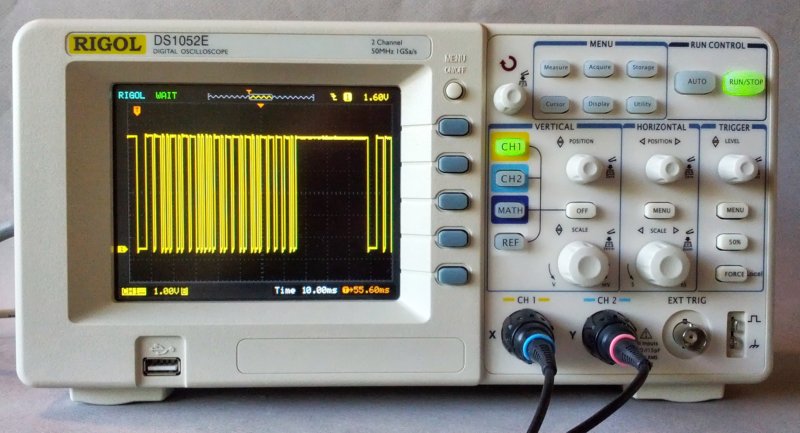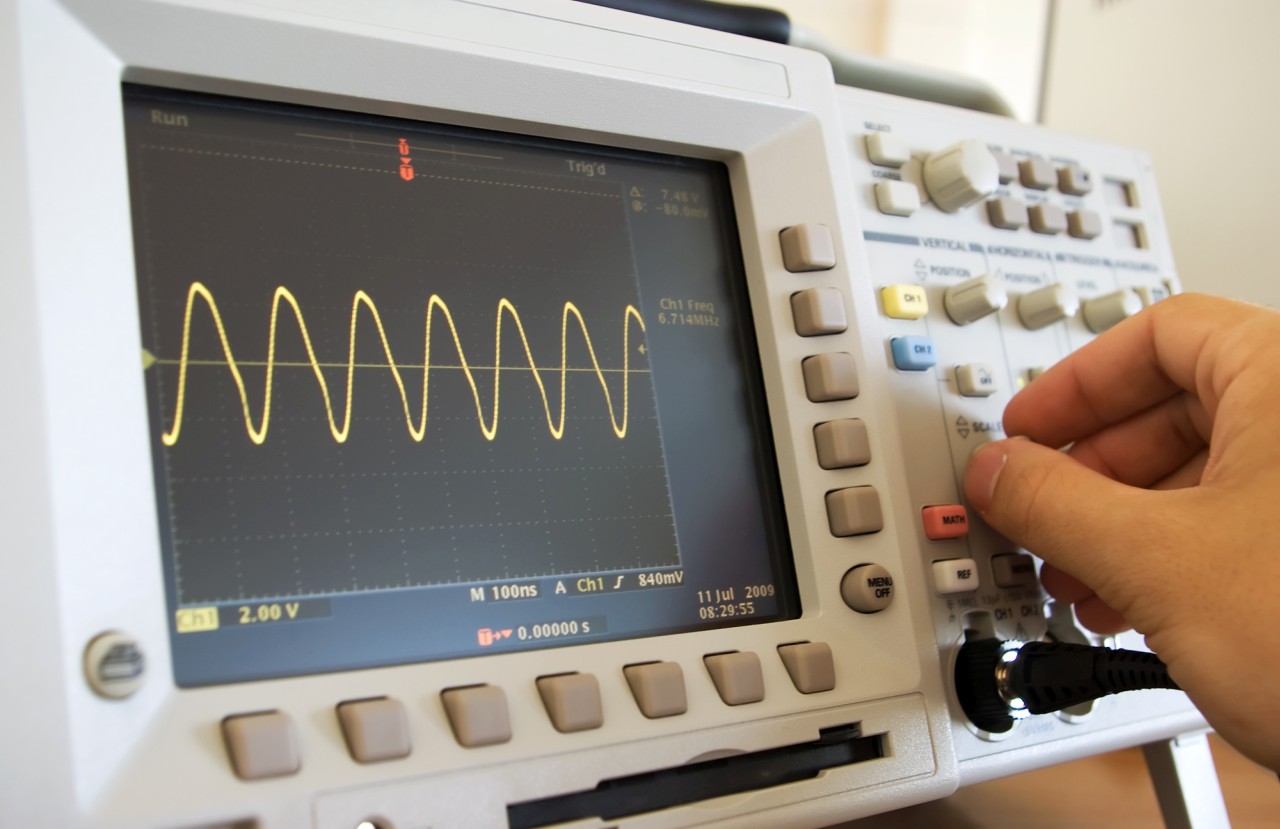
- #Quickmenu oscilloscope img manual
- #Quickmenu oscilloscope img portable
- #Quickmenu oscilloscope img software
- #Quickmenu oscilloscope img code
By switching the values from 0 to 31 very fast, we form a pixel of 32 dots across a single column. Each of the 32 pixels across a single column in the screen is assigned a particular voltage level (digital values from 0 to 31) as seen in the code. The analogue values are applied to the y-input of the scope.
#Quickmenu oscilloscope img code
The trace is set at this value for proper persistence of vision and in synchronisation with the timing of the code for proper display. The trace of the oscilloscope runs with internal trigger set at 10ms (time/ div). More than one image can be stored in new arrays until the Flash memory saturates. So, for persistence of vision, the trace is repeated continuously for a certain number of cycles (50 here in the code). The loop is repeated continuously as there is no DDRAM (data display RAM) to store the pixel information. The details are given in comment lines of the code. The vertical trace movement is synchronised by the 20ps delay from one column to the next. On state is represented by a value of 1 to 31 and an off state by 0. The myte array stores the pixel data of 32 pixels along a column, indicating the on/off states. The byte codes of the image is in the intel array which is stored in Flash memory. The code is written such that it accepts byte codes in pages and columns format. The hex code is burnt in the microcontroller using a suitable programmer.
#Quickmenu oscilloscope img software
The software is written in C language and compiled using Programmer's Notepad of WinAVR software. An R-2R ladder network DAC (digital-to-analogue converter) is used to convert digital (8-bit) values from the microcontroller to analogue values that are input to the oscilloscope.

A 16MHz crystal is connected across its pins 12 and 13 to provide basic clock. It has 16kB insystem programmable Flash memory, 512 bytes of EEPROM and 1kB SRAM. The heart of the project is ATmega16 microcontroller - a low-power CMOS 8-bit chip based on AVR enhanced RISC architecture. 2: Circuit for oscilloscope as image viewer 1: Image display on an analogue oscilloscopeįig. 1 shows 'EFY' image on the oscilloscope.įig.

Here we present a project where you can display any image or multiple images (monochrome) on an analogue oscilloscope. But displaying a monochrome bitmap image on an oscilloscope is a challenging yet interesting task. There is a luminous spot which moves over the display area in response to the input voltage. It is nothing but a fast x-y plotter that displays an input signal versus another signal or time. Let's start with two important facts: 1: Tektronix - world renowned maker of oscilloscopes for decades.Cathode ray oscilloscope (CRO) is a versatile laboratory instrument which is used to display, measure and analyse electrical signals. They still make really great digital scopes too but these old analog scopes were built to last! The 465 model has been around since the 1970's and you still see plenty of them in use today.
#Quickmenu oscilloscope img portable
Which brings us to fact #2 - Model 465! This was the first truly portable scope and it was built to take the rigors of traveling techs.

And Tektronix made a boat load of them so you can still find plenty of them in working order and some that aren't that are useful for parts. Which brings us to another important point. The new digital scopes are great and they do a ton of stuff the old analog models can't do BUT. because everything today is manufactured using proprietary semi-conductors and surface mount technology, when a digital scope goes south you are left with a very expensive boat anchor because they can't be repaired. The 465 is put together using common components that can still be found today with little trouble (the exception being the tunnel diodes). There are no proprietary chips or surface mounted components. Translation: a guy with a soldering iron and small tools can still repair them! In fact, there are a number of shops around the country that specialize in repair and calibration of old Tektronix scopes.
#Quickmenu oscilloscope img manual
#Quickmenu oscilloscope image manual#Īnd all of the tech manual to maintain them can be found online for free. Having said all of that, if you're looking for a used analog scope it's always a good idea to only buy one that's showing wave forms from a function generator.


 0 kommentar(er)
0 kommentar(er)
